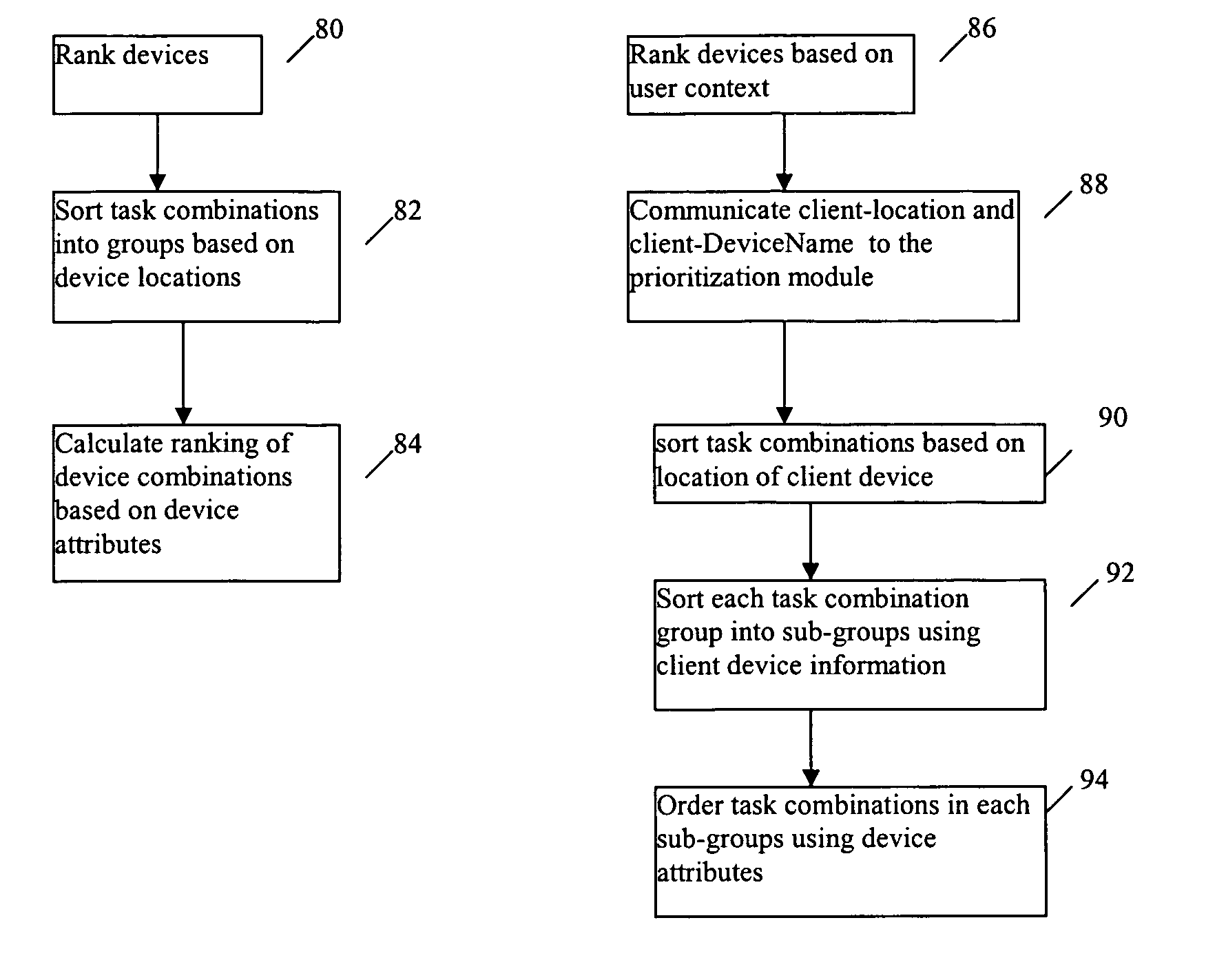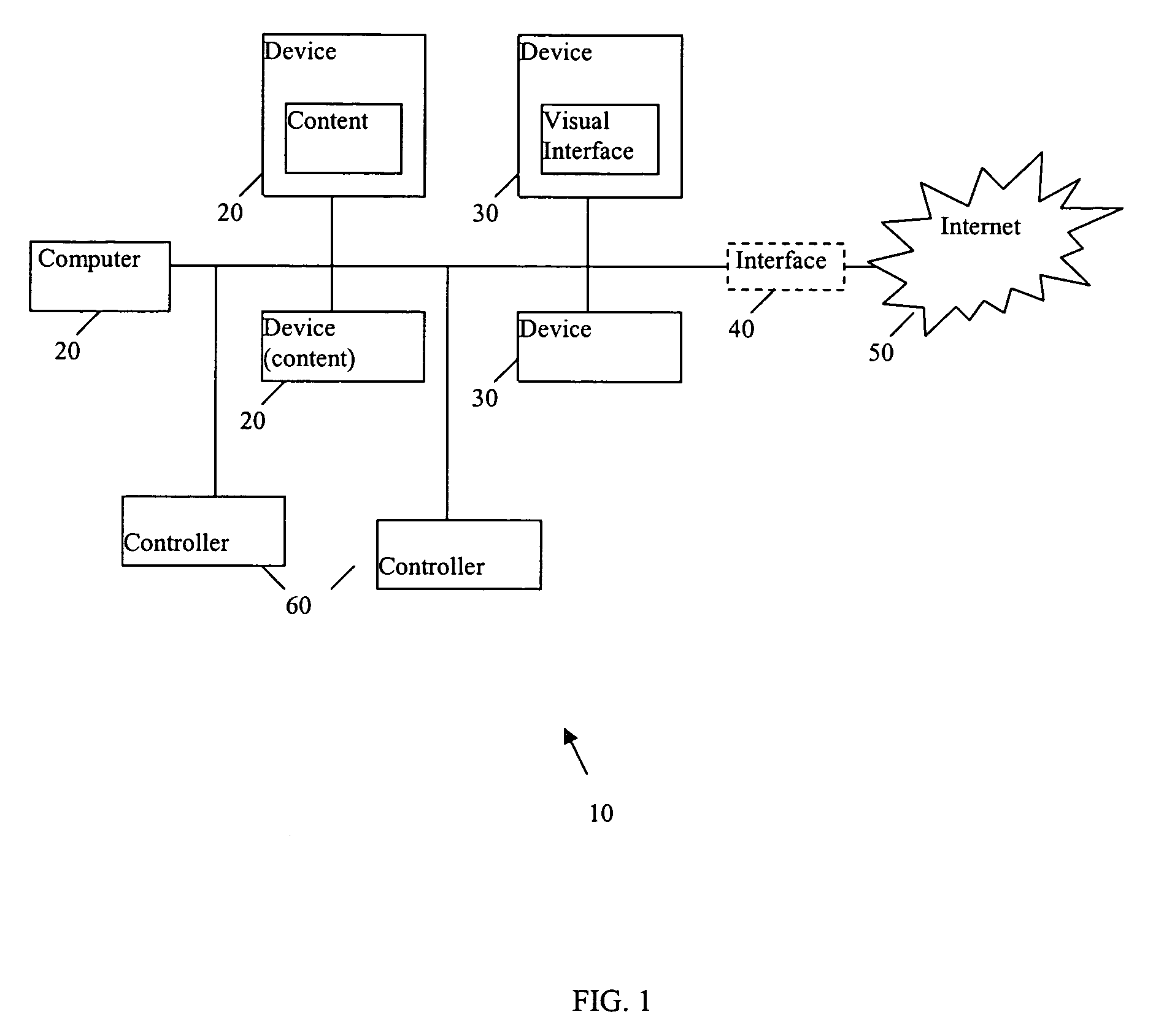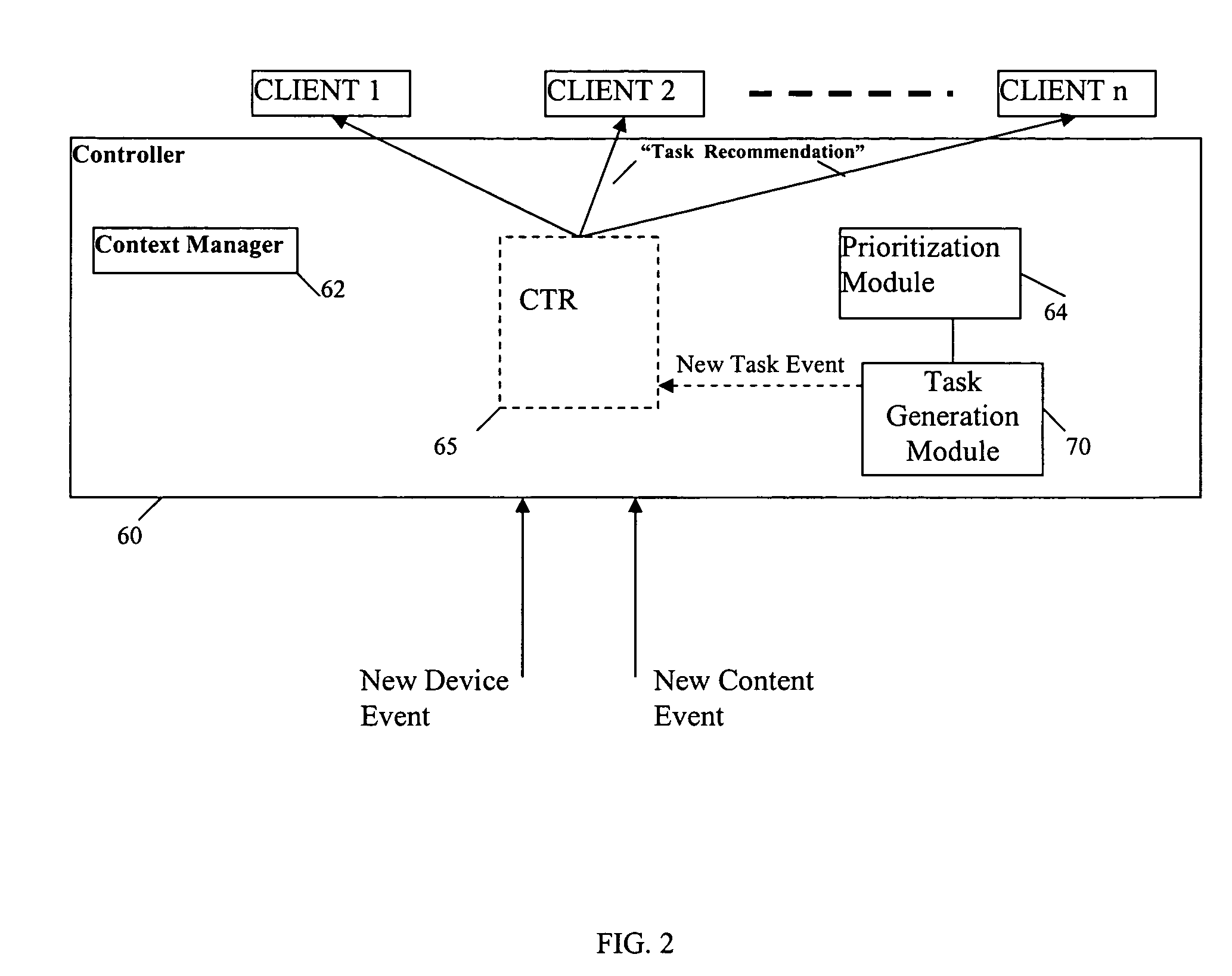Method and system for prioritizing tasks made available by devices in a network
a task and network technology, applied in the field of presenting tasks in a network, can solve the problems of large number of tasks available for the user to execute, likely to be executed by the user, etc., and achieve the effect of facilitating task prioritization and minimizing the effort required
- Summary
- Abstract
- Description
- Claims
- Application Information
AI Technical Summary
Benefits of technology
Problems solved by technology
Method used
Image
Examples
Embodiment Construction
[0012]In one embodiment the present invention provides a method and system that facilitates prioritization of tasks available through the devices in a home network. The tasks comprise user level descriptions of the high-level actions a user can perform using the underlying devices. By prioritizing tasks for a user, the present invention aims to minimize the effort required to compare and comprehend the usefulness and feasibility of tasks. In doing so, the number of tasks shown to a user as being possible, can be reduced and the task identified as the highest priority task for a given user can be used by the application software as the suggested ‘most likely’ task for the user. Further, tasks identified as having a lower priority can be interpreted by the application as tasks that are less likely to be chosen by the user. For example, a task that involves devices in different rooms is possible, but in all probability, it will not be chosen by the user.
[0013]To provide accurate priori...
PUM
 Login to View More
Login to View More Abstract
Description
Claims
Application Information
 Login to View More
Login to View More - R&D
- Intellectual Property
- Life Sciences
- Materials
- Tech Scout
- Unparalleled Data Quality
- Higher Quality Content
- 60% Fewer Hallucinations
Browse by: Latest US Patents, China's latest patents, Technical Efficacy Thesaurus, Application Domain, Technology Topic, Popular Technical Reports.
© 2025 PatSnap. All rights reserved.Legal|Privacy policy|Modern Slavery Act Transparency Statement|Sitemap|About US| Contact US: help@patsnap.com



